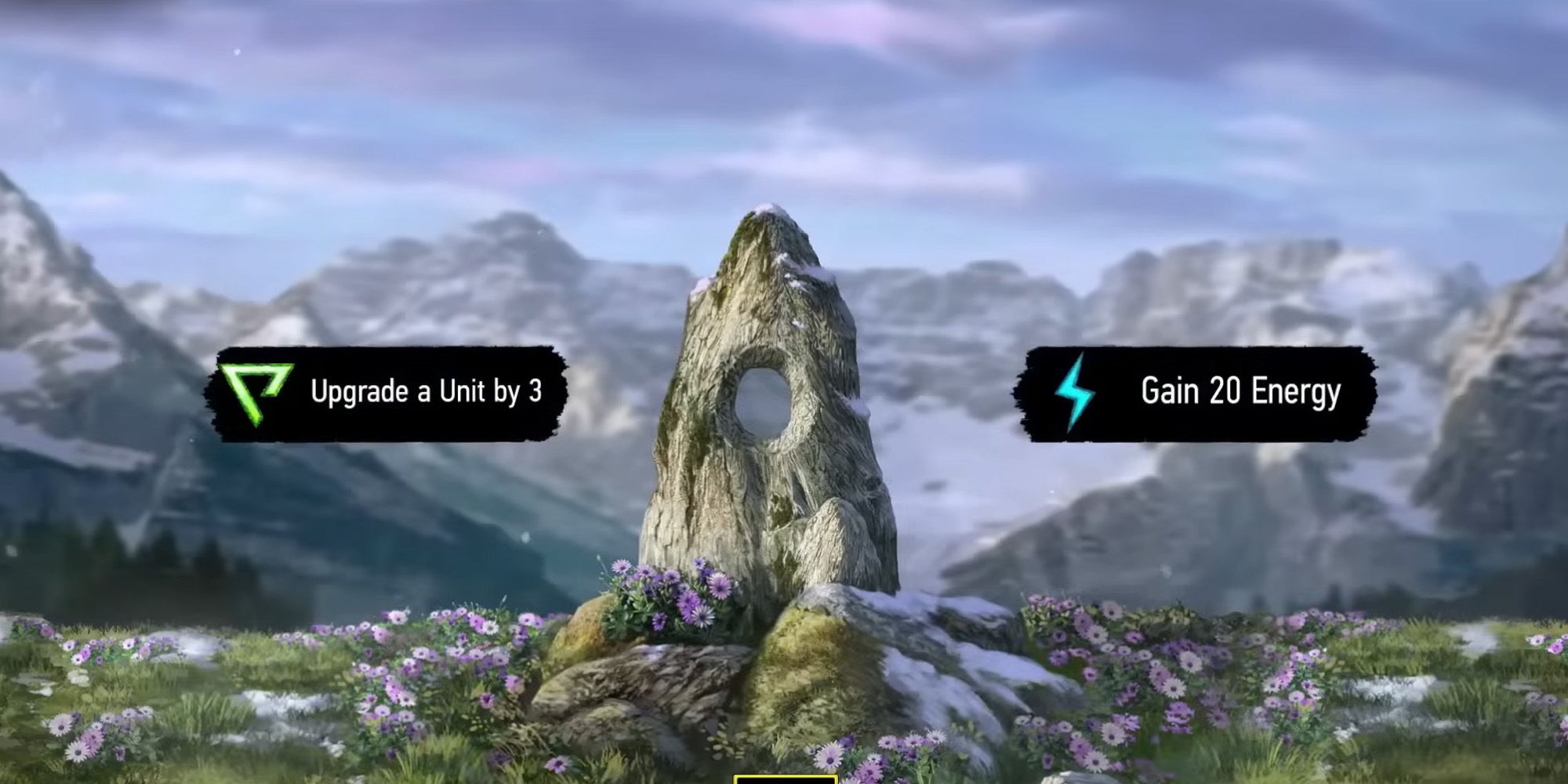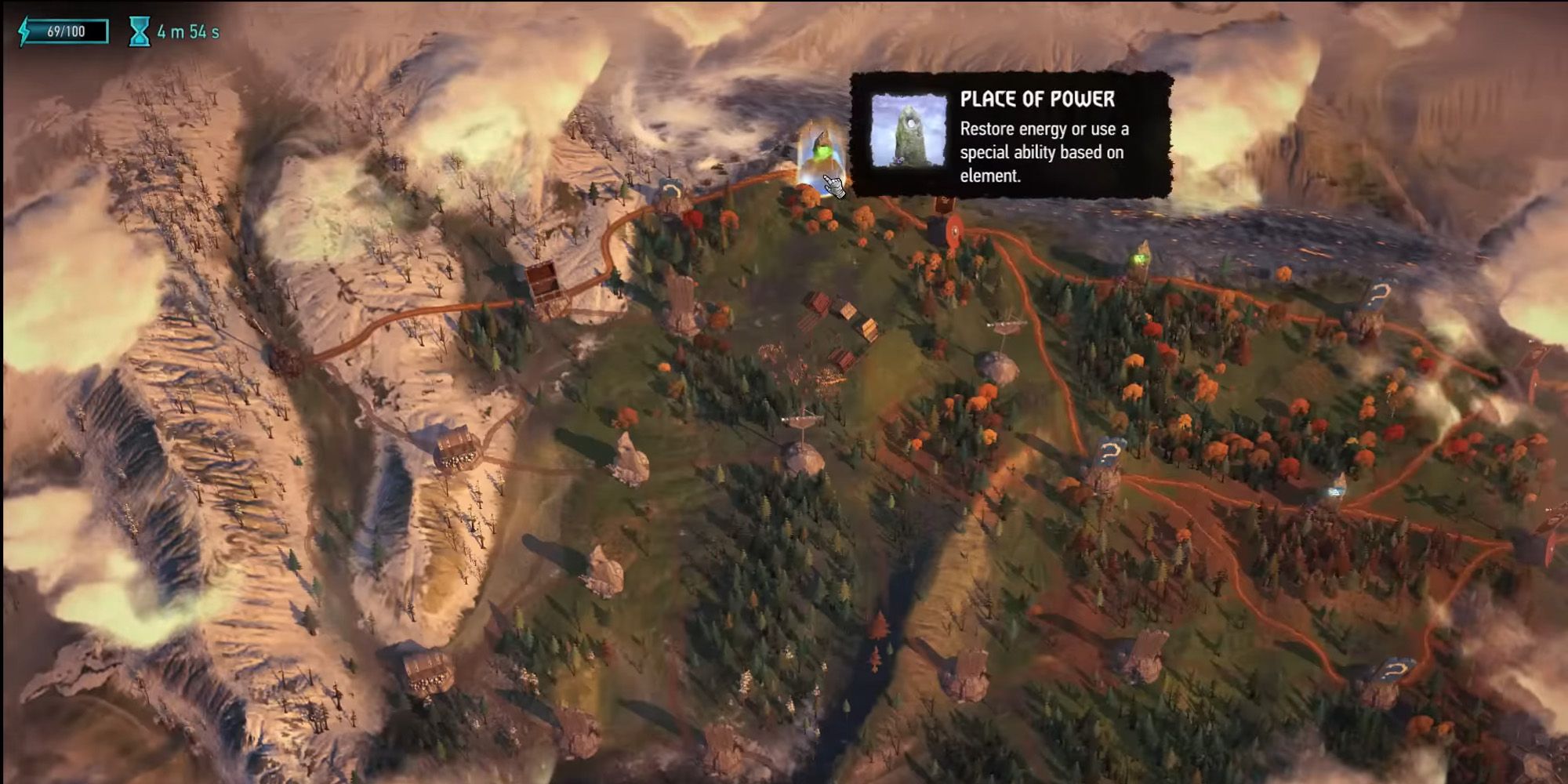In the new Gwent: Rogue Mage strategy card game, players can visit Places of Power to power up their cards, gain energy for use in a match, and more. Gwent: Rogue Mage is the single-player expansion to the successful multiplayer series Gwent. The card game comes from the popular action RPG game The Witcher 3, where it was an optional mini-game that became immensely popular. Since the Witcher 3's release, people have been playing Gwent with homemade decks and now can enjoy the experience in single-player mode with Gwent: Rogue Mage on Steam.
Places of Power are crucial to the Witcher franchise because they allow the main character, Geralt, to strengthen his abilities. However, these ancient stones predate Geralt and the Witchers in general. In Gwent: Rogue Mage, the main character Alzur uses the Places of Power to power up their decks or gain energy. Energy is a resource needed for spellcasting during a match, but if players use it before every round, they will run out of energy quickly. The two basic options for replenishing power are to wait until it fills back up with time or to visit a Witcher Place of Power on the map and gain some energy there.
There are four different kinds of Places of Power in Gwent: Rogue Mage are distinguishable by their color: red, yellow, green, and blue. Since players can choose their routes on the map, they can look at where Places of Power are, determine what color it is, and make a decision about whether or not they want to visit on that particular run. Gwent: Rogue Mage is meant to be played by making several runs over the same map to gather different cards, collect Monster extracts, and eventually craft the potions that will make up the very first Witcher.
Places of Power Guide for Gwent: Rogue Mage
Each of the four Places of Power offers players the chance to either gain 20 energy or something else to help with players' decks. This second option is dependent on the color of the Place of Power, which can be seen from the map screen:
- Red Place of Power - remove a card from the deck. This helps players streamline their decks and remove excess or undesirable cards. Unfortunately, there is no other way to outright remove a card from the deck except at Red Places of Power, and players will encounter these early on the game board.
- Yellow Place of Power - transform a card. This allows players to change one card in the deck to something more powerful, which is a more useful mechanic than just ridding the deck of a card using a Red Place of Power.
- Green Place of Power - upgrade a unit by 3. This allows players to increase a card's health by 3 points, making it stronger in battle and increasing the victory points by 3 as well. When adding in buffs and bonuses, having a card with a 3-point upgrade is a significant advantage.
- Blue Place of Power - duplicate a card in the deck. This lets players double down on a card and, when used correctly, can help players build powerful decks filled with multiples of the strongest cards. Since players run through the map several times, it may be worth always stopping at a blue Place of Power to double up on the best Gwent cards.
Gwent: Rogue Mage is available for PC, Android, and iOS.


